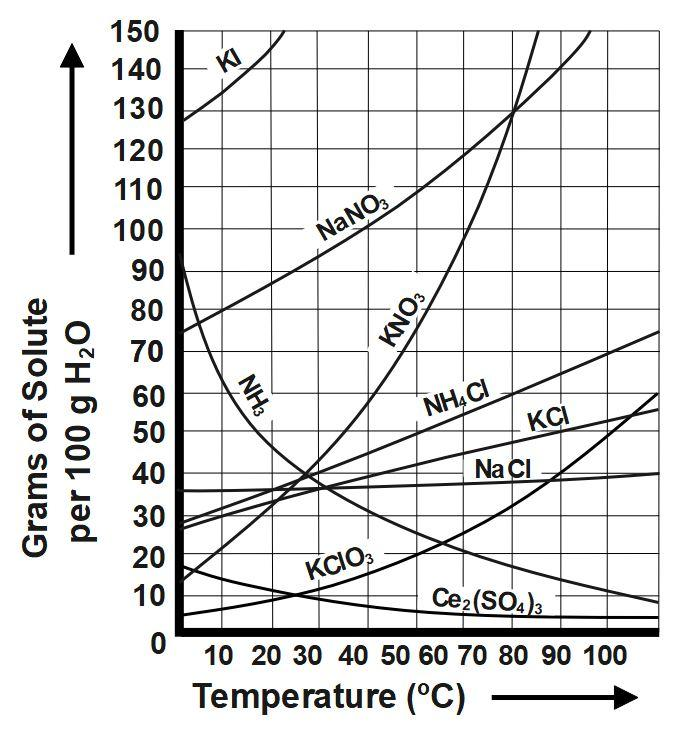
What is the solubility of cerium sulfate at
Answer
415.5k+ views
Hint: We know that the solubility product of a salt is basically the product of the solubility’s or concentration of the products (ionic species) of the reaction, where the concentration of each ion is raised to the power respective to their stoichiometric coefficients in a balanced chemical equation. Sometimes, solubility of a compound gets lower with increase in temperature, cerium sulfate is one of those compounds in which its solubility decreases with increase in temperature.
Complete answer:
As we know that the solubility of cerium sulfate at

The below graph indicates solubility of cerium sulphate. The chemical formula of cerium sulphate is
Therefore, Cerium
Note:
Remember that there can be different reasons for the decrease in solubility of any element or compound with increase in temperature of the solution; in this case it was due to more orderly arrangement occurring with increase in temperature. The formula of solubility product constant depends upon the number of ions produced by the ionic compounds in the water.
Complete answer:
As we know that the solubility of cerium sulfate at

The below graph indicates solubility of cerium sulphate. The chemical formula of cerium sulphate is
Therefore, Cerium
Note:
Remember that there can be different reasons for the decrease in solubility of any element or compound with increase in temperature of the solution; in this case it was due to more orderly arrangement occurring with increase in temperature. The formula of solubility product constant depends upon the number of ions produced by the ionic compounds in the water.
Recently Updated Pages
Master Class 11 Economics: Engaging Questions & Answers for Success

Master Class 11 Business Studies: Engaging Questions & Answers for Success

Master Class 11 Accountancy: Engaging Questions & Answers for Success

Master Class 11 English: Engaging Questions & Answers for Success

Master Class 11 Computer Science: Engaging Questions & Answers for Success

Master Class 11 Maths: Engaging Questions & Answers for Success

Trending doubts
State and prove Bernoullis theorem class 11 physics CBSE

What are Quantum numbers Explain the quantum number class 11 chemistry CBSE

Write the differences between monocot plants and dicot class 11 biology CBSE

Why is steel more elastic than rubber class 11 physics CBSE

Explain why a There is no atmosphere on the moon b class 11 physics CBSE

1 ton equals to A 100 kg B 1000 kg C 10 kg D 10000 class 11 physics CBSE




